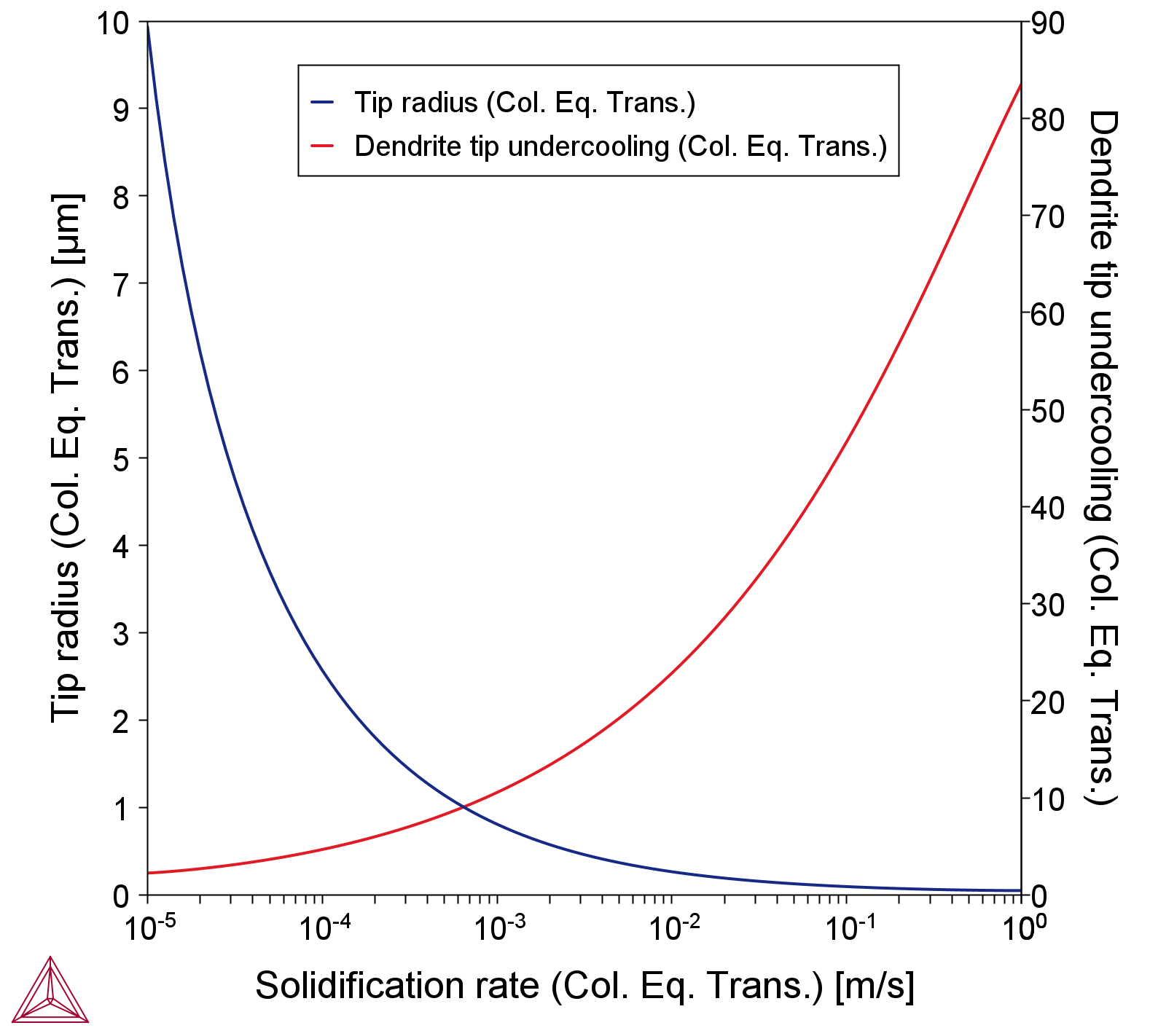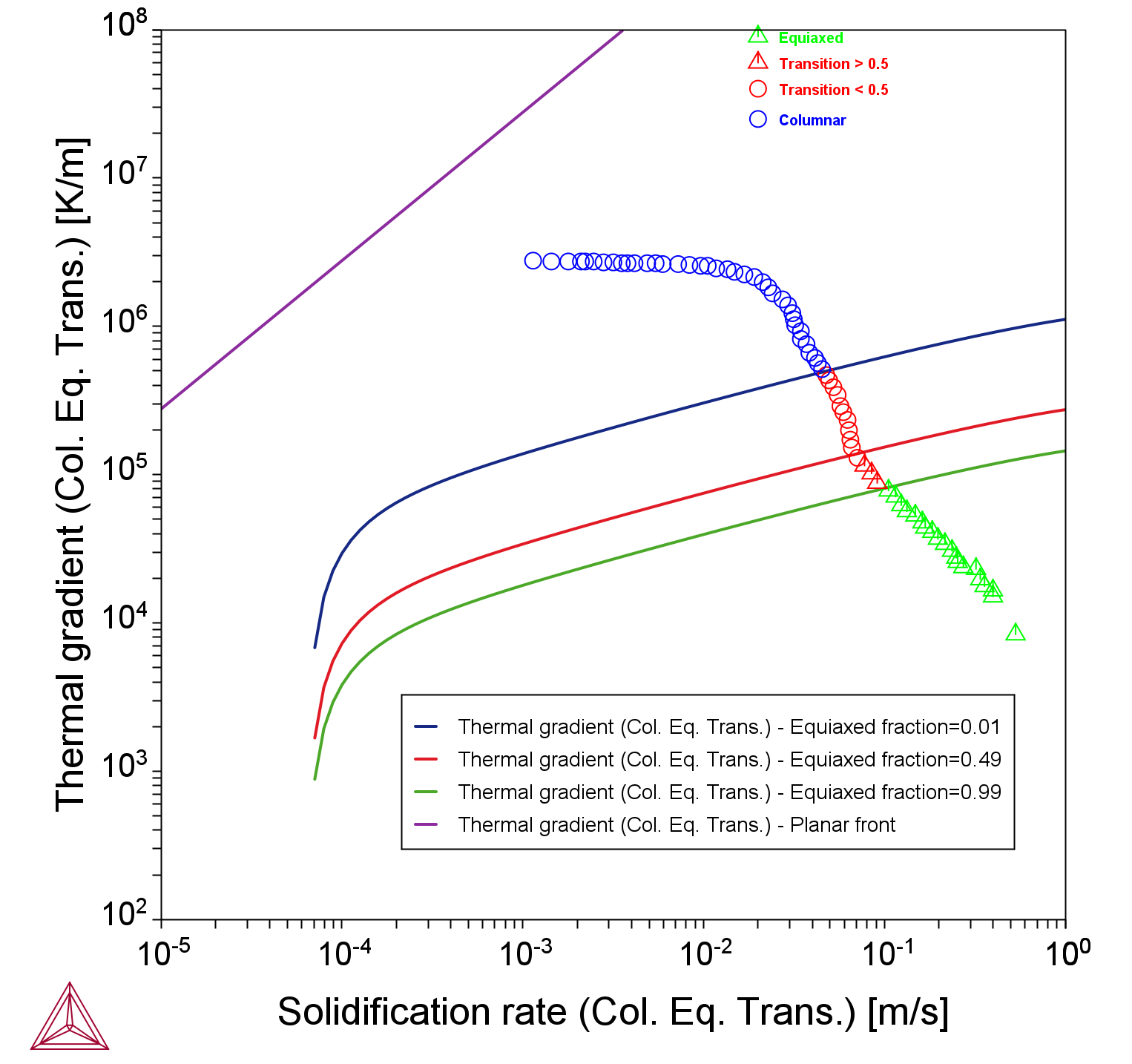PM_G_17: Columnar to Equiaxed Transition of an IN718 Alloy
The example uses the Property Model Calculator and the Columnar to Equiaxed Transition Property Model to compare calculated CET curves for an IN718 alloy to experimental data.
About the Columnar to Equiaxed Transition (CET) Property Model
A One Axis calculation for the FCC_L12 primary phase is done using the CET parameters entered on the Property Model Calculator Configuration window.
The settings entered include:
- Interfacial energy:
0.5J/m2. - Number of nucleation sites:
4.0E11/m3 - Nucleation undercooling :
4.0K - Equiaxed exponent:
3.13 - Solve for: Thermal gradient
- Equiaxed fractions:
0.01 0.49 0.99
The literature data from Polonsky et al. [2020Pol] are not purely experimental data, but rather combined with experimental equiaxed evidence and model calculations with numerical values of thermal gradients, growth velocity as well as tip undercooling. Polonsky et al. estimated tip undercooling based on a Scheil calculation, which smeared out the composition inhomogeneity at the dendrite front, hence underestimating the undercooling. Since both tip undercooling and nucleation site density promotes the formation of equiaxed crystals, an increase in undercooling in this example calculation leads to a decrease in nucleation site density compared to the results in [2020Pol] if one were fitting the same set of data.
- Folder: Property Models → General
- File name: PM_G_17_IN718_Columnar_Equiaxed_Transition.tcu
To run this example requires a license for the TCS Ni-based Superalloys Database (TCNI) version 12 (TCNI12) or newer and the TCS Ni-alloys Mobility Database (MOBNI) version 6 (MOBNI6) or newer.
Example PM_G_15: Columnar to Equiaxed Transition (CET) of a NiAlCr Alloy uses demo databases available to everyone.
Visualizations
Many of our Graphical Mode examples have video tutorials, which you can access in a variety of ways. When in Thermo‑Calc, from the menu select Help → Video Tutorials, or from the main My Project window, click Video Tutorials. Alternately, you can go to the website or our YouTube channel.
Open the example project file to review the node setup on the Project window and the associated settings on the Configuration window for each node. For some types of projects, you can also adjust settings on the Plot Renderer Configuration window to preview results before performing the simulation. Click Perform Tree to generate plots and tables to see the results on the Visualizations window.
Reference
[2020Pol] A. T. Polonsky, N. Raghavan, M. P. Echlin, M. M. Kirka, R. R. Dehoff, T. M. Pollock, 3D Characterization of the Columnar-to-Equiaxed Transition in Additively Manufactured Inconel 718, in Superalloys 2020 (2020), pp. 990–1002.
More Information
Also see these examples that use the same Property Model: PM_G_15: Columnar to Equiaxed Transition (CET) of a NiAlCr Alloy and PM_G_16: Columnar to Equiaxed Transition of a CMSX-4 Alloy.

